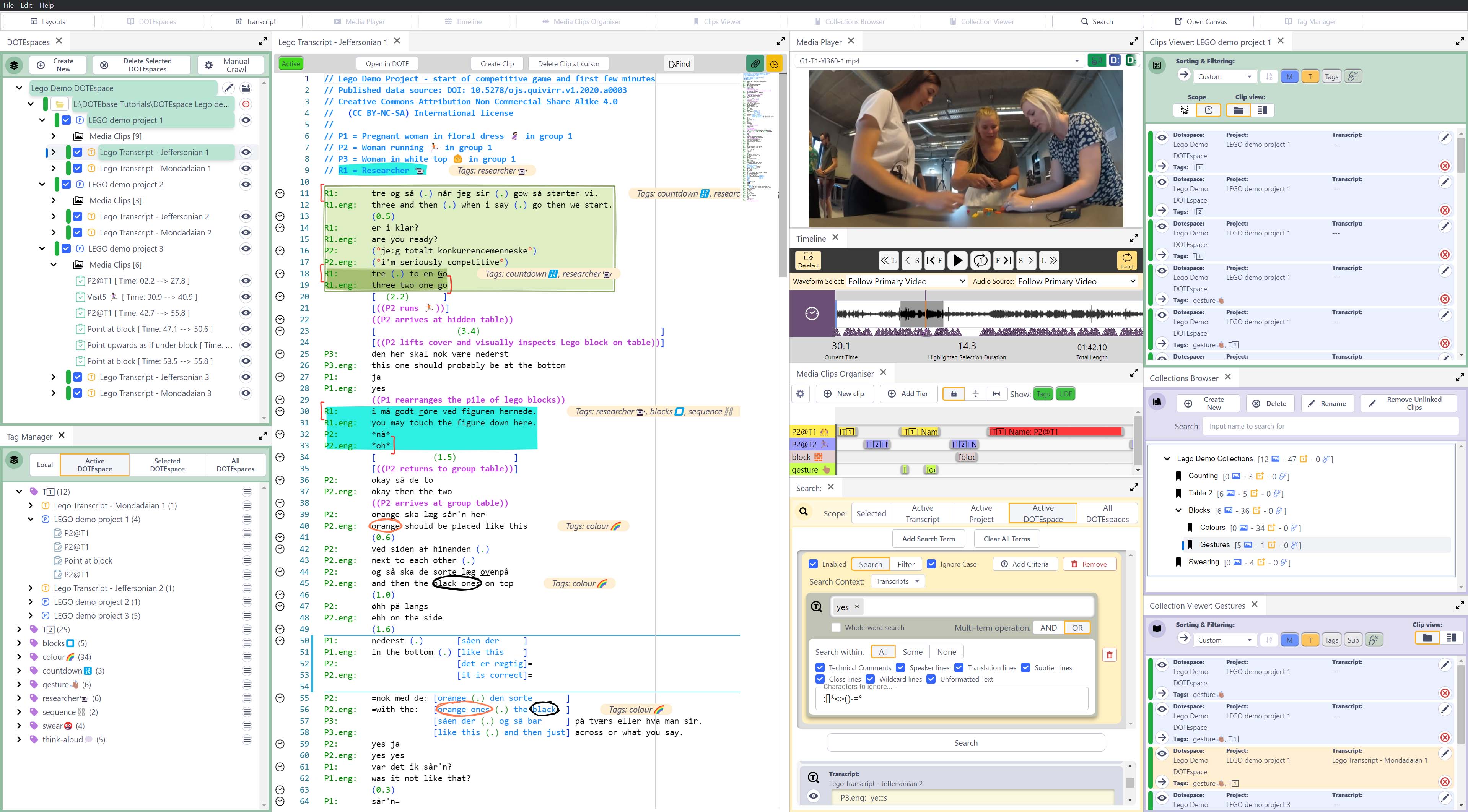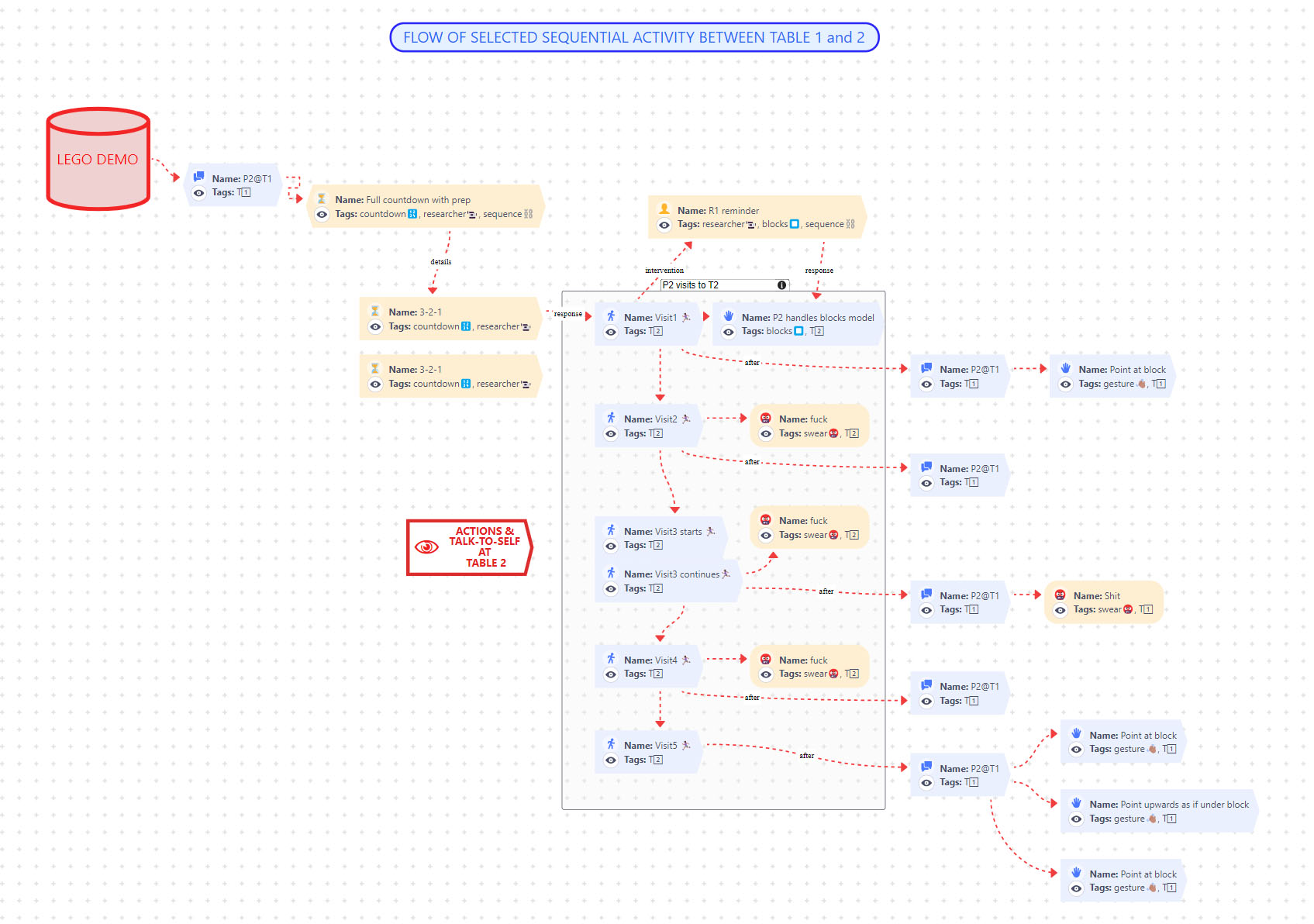
The BigSoftVideo team is proud to present DOTEbase, a new member of our software family.
DOTEbase is designed to support qualitative analysis of large audio-visual data sets. It makes it easy to track, annotate, and search through all of your Projects and Transcripts created in DOTE, all in one flexible interface. DOTEbase extends the functionality of DOTE by allowing you to create 'clips' of your media recordings before you have even produced a transcript. These Media-Clips can be tagged and organized on a tiered timeline for each Project, or added to any of your existing clip collections.
DOTEbase also introduces a new spatial way to organise your clips and annotations using our Canvas tool.
DOTEbase Key Features
Database
Keep track of all your projects, transcripts and clips
Offline mode
View transcripts and clips even when storage is temporarily unavailable or not plugged in
Flexible layouts
Highly-flexible default and custom layouts to help focus on specific tasks
Clipping
Create and organise clips of your media and transcripts
Timelines & Tiers
View media clips on a tiered timeline for a score-based visualisation
Tags & Annotations
Tag & annotate your media and transcript clips to allow for easy searching, browsing and tracking
Collections
Organise your clips and annotations from various projects into thematically organised collections
Flexible search
Search across multiple transcripts and clips, and use flexible search-terms and filters to zero in quickly
Canvas
Visualise clips spatially on a 2D canvas to map rich qualitative relationships
What is DOTEbase?
DOTEbase is our software package that is designed to support qualitative analysis of large audio-visual data sets. We built it because we wanted a software tool to help researchers to analyse larger corpora of data, either before they have been transcribed or after.
- It piggybacks on sets of transcripts created using >DOTE that are stored on the same computer or are accessible via an external drive or remote file system.
- It maintains a local snapshot of all the transcripts that is updated in the background. As much data as possible is stored locally with the transcripts, so if something goes wrong, then the snapshot can be reconstructed again. If a remote drive goes offline, then DOTEbase will use the cached version until it comes online again.
- It provides a range of tools to annotate, tag, make clips, collect clips and make visual mind maps of the data over time.
Which platforms are supported?
DOTEbase has native desktop support for Windows 10 and 11, as well as for macOS, including the new Apple Silicon with M-series processor.It cannot be installed on a smartphone nor a tablet running Android or iOS.
How do I try DOTEbase ?
DOTEbase is not available to try without purchasing an Edition license. Some of the functionality of clipping is available to view in the Free Edition of DOTE, ie. one can view Transcript Clips made by others, such as present in two of the transcripts in the Lego Demo Project for DOTE. Once a license is purchased and activated, then all the functionality of DOTE and DOTEbase is unlocked.How do I get DOTEbase?
If you purchase a PRO or PRO COMMUNITY Edition license, then DOTEbase is included. If you have already purchased a PRO or PRO COMMUNITY license before DOTEbase was released, then it is also included. Note that even though DOTEbase is a standalone software package, it relies on DOTE to organise it's audio-visual media and transcripts in Projects.
How do I cite DOTEbase ?
We would appreciate that you cite DOTEbase when you have used it for the analysis of data in a publication or presentation. DOTE can be cited in the following ways (in Chicago Author-Date 17th edition style):- McIlvenny, Paul (Producer), Davidsen, Jacob Gorm (Producer), Stein, Alexander (Developer). (2024). DOTEbase. Computer programme, Github. https://github.com/BigSoftVideo/DOTEbase/
- McIlvenny, Paul (2024). Guide for DOTEbase Users. Software documentation, Github Docs. https://bigsoftvideo.github.io/DOTEbase/
- McIlvenny, Paul & Davidsen, Jacob Gorm (2024). DOTEbase Video Tutorials. YouTube.

